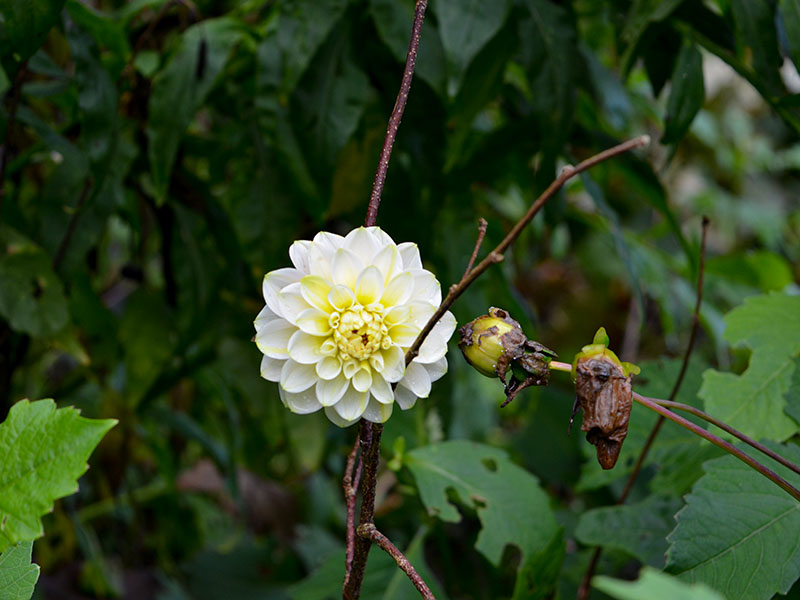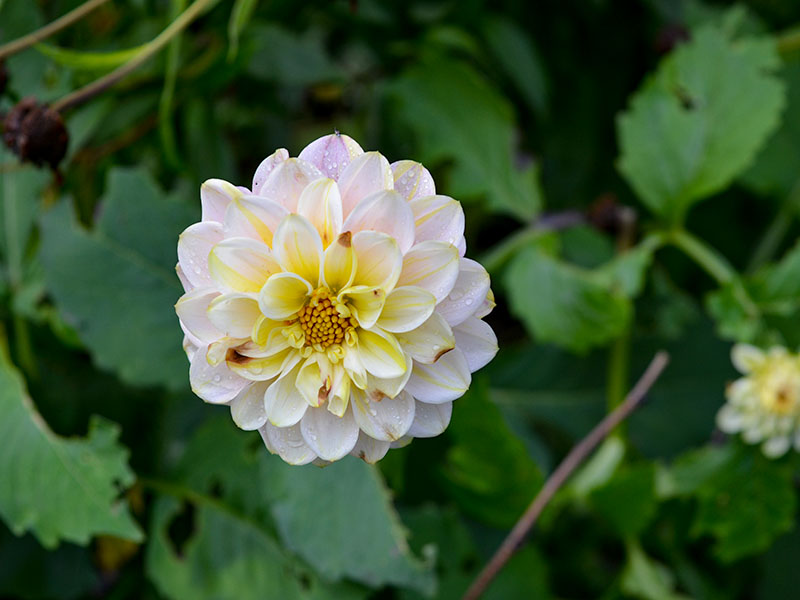
Bulbs, Perennials > Dahlia > Dahlia 'Wine Eyed Jill'
Dahlia
'Wine Eyed Jill'
Wine Eyed Jill Dahlia
| Family |
| Asteraceae |
| Genus |
| Dahlia |
| Cultivar |
| 'Wine Eyed Jill' |
| Category |
| Bulbs, Perennials |
| USDA Hardiness Zone |
| 9 |
| Canadian Hardiness Zone |
| 9a |
| RHS Hardiness Zone |
| H3 |
| Temperature (°C) |
| - 5 - 1 |
| Temperature (°F) |
| 23 - 34 |
| Height |
| 0.5 m - 1 m |
| Spread |
| 0.5 m - 1 m |
Photographs
Description and Growing Information
Flowering Period
| General Description |
| This cultivar bears dark stems with green foliage. During the mid summer until the first frost, the small flowers bloom a colourful mix. |
| Landscape |
| Container, border, single specimen, flower garden margin. |
| Cultivation |
| Fertile, humus-rich, well-drained soil, enriched with organic matter as well as fertilizer. Full sun requirement. |
| Shape |
| Clump-forming. |
| Growth |
| Fast |
| Pests |
| Aphids, leaf miners, glasshouse red spider mite and slugs are common pests. Earwigs sometimes damage blooms. Powdery mildews can be damaging in dry conditions. In wet weather grey moulds and other fungal rots can be a problem. |
| Habitat |
| Horticultural origin. |
| Flower Description |
| 'Wine Eyed Jill' has small flowers (maximum of 9cm diameter) starting dark purple and blooming a colourful mix of cream to pink. The smaller flower size is relative to other Dahlia cultivars. |
| Notable Specimens |
| Lanhydrock Gardens, Cornwall, England. |
| Propagation |
| Softwood cuttings taken in spring from shoots will propagate. Propagation by division of the tubers works as well, though each section must have at least one viable bud. |

